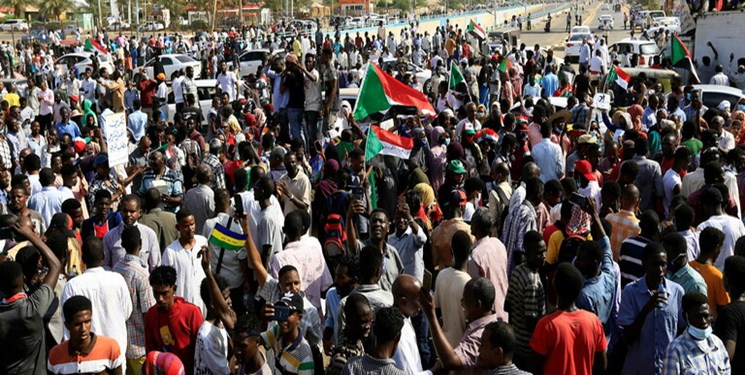Tens of thousands of Sudanese demonstrate in front of the Presidential Palace in Khartoum
Protesters in a military coup in Sudan have reached the presidential palace despite the widespread deployment of security forces and attacks with tear gas and sound bombs.
Tens of thousands of Sudanese citizens today again gathered in the heart of Khartoum and other cities to protest against last October’s military coup.
According to Russia Today, the protests coincided with the third anniversary of the beginning of the country’s revolution against the regime of Omar al-Bashir, which led to the overthrow of this regime in April 2019.
In Khartoum, protesters opened the Nile al-Abid bridge between Umm Darman and Khartoum to Nile Street, where the Sudanese presidential palace is located. The Al-Mulk Nimr strategic bridge, which connects to the street where the Sudanese Ministry of Foreign Affairs and the General Command of the Armed Forces and most of the country’s ministries and vital institutions are located, was opened with the onslaught of protesters and police retreat.
Sudanese police also tried to disperse protesters by throwing sound and gas bombs at protesters outside the presidential palace.
According to media reports, at least one person was killed and more than 200 were injured in Sudanese police raids on protesters.
The Sudanese trade union, one of the country’s most influential organizations, has called on the people to join the wave of protesters around the presidential palace.
“The military must stand by its people and refrain from any attempt to strike at peaceful gatherings,” the statement said. Today, there is no capital other than surrendering to the will and determination of the victorious revolution and announcing the complete surrender of the power of existence to the forces of the revolution.
Several political groups called for protests Sunday to mark the anniversary of the revolution and to demonstrate the rejection of a recent political agreement between Sudanese Prime Minister Abdullah Hamdouk and the army. On October 25, the military ousted Hamduk’s transitional government and declared a state of emergency amid accusations and disputes between politicians and the military.
However, Hamdouk was reinstated on November 21 under an agreement with Sudanese army commander Abdel Fattah al-Burhan, aimed at resolving a political crisis that undermined Sudan’s transition to democracy. Before military domination, Sudan was governed by a governing council of military and civilian officials.









